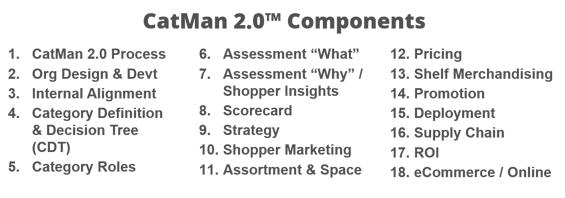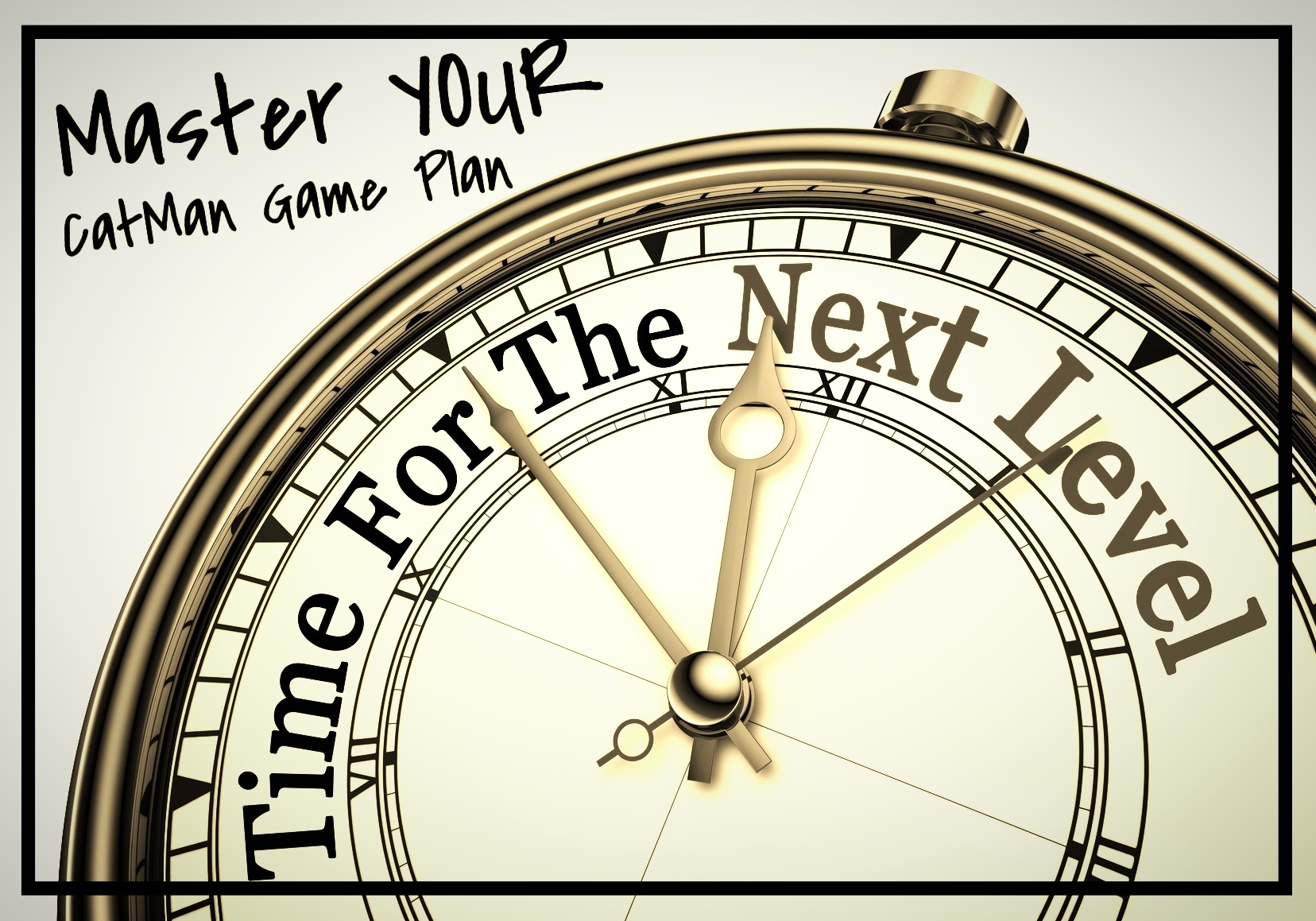Category Management Executives (including Directors, VPs and Managers) Face a Common Dilemma
How to get from where you are, to where the industry is going … Here’s what you need to know:
How to make the best decisions and strategic recommendations to move organizations forward in category management and stay relevant, while developing the knowledge on teams beyond advanced category management so that they can develop better solutions for their business.
CatMan 2.0™ (developed by the Category Management Association) gives us solid guidelines and a framework to help get to more advanced category management, but the whitepaper alone isn’t enough to act on. Fear not — I’m going to give you a clearer picture of what you need to do to advance category management in your organization.
First, Have You Read CatMan 2.0™?
If you’re one of the people who has actually read the whitepaper, you may be feeling the side effects of information overload, with an overwhelming number of ideas, opportunities and perspectives for you to sift through.
In last week’s blog (Advance Your Category Management Approach. Don’t Get Left Behind!), I shared my perspective on the biggest areas of change.
Here are the different components in the CatMan 2.0™ 325-page whitepaper:

These are all important considerations, but it’s a lot of information!
Many folks I’ve talked to have expressed the need to make changes, but unsure where or how to start.
Some parts are more relevant for them than others. And they have different levels of interest/influence over others based on their roles.
My perspective below outlines 3 considerations as you plan for 2017 and adapt your category management approach to 2.0, including:
1. Don’t start with CatMan 2.0™. You Need the Category Management Foundations First
If you, your team, your organization and/or your industry are new to category management, this mastery-level approach isn’t for you. The basics come first, starting with a comprehensive understanding of foundational, intermediate and advanced category Management (referred to as CatMan 1.0 in CatMan 2.0™). You have to walk before you can run.
2. Determine Who Needs Educational & Informational vs Strategic & Collaborative Perspective
First, we need to separate the educational components of advanced category management (what experienced practitioners should know and/or can influence), from the strategic elements that executives need to know and/or influence.
Not everyone on your team is a decision-maker. Most can’t influence change in your organization. But everyone needs to inform themselves through credible education on the key components of advanced category management to impact their sphere of influence.
Separating the “educational & informational” from the “strategic & collaborative” perspective makes it easy to identify who needs what level of training. Following are some of the questions that should be addressed based on these two perspectives:
Educational & Informational
- “How can I talk to my peers, partners and clients to reflect some new approaches in CatMan 2.0™?”
- “What are the changes across the components and how does this affect me in my role?”
- “What are considerations that I should reflect in my day-to-day work?”
- “What are examples and exercises to turn conceptual into applicational / practical learning?”
Strategic & Collaborative
- “What do I need to know about the different components of CatMan 2.0™ from an educational perspective?”
- “What are ways for me to make changes in our internal approach to reflect these changes?”
- “What are my biggest priorities?”
- “What obstacles exist to prevent this work?”
- “What are others in the industry doing to move forward in the areas most important to my business / organization?”
INTERNAL ALIGNMENT —
Educational & Informational
- What is collaboration?
- What is the importance of moving to internal collaboration and what does this mean for organizations?
- Where are the biggest areas of opportunity to improve internal collaboration in category management?
- What are the benefits of moving to a more collaborative approach internally?
Strategic & Collaborative
- How aligned is your organization in category management across different functions/departments?
- Where are the biggest opportunities to bridge gaps to move to a more strategic and holistic approach to category management?
- What are the biggest barriers?
- How are other organizations improving alignment internally?
CATEGORY ASSESSMENT —
Educational & Informational:
- What are the new data sets and technologies available in the industry for more advanced category management?
- What are the best analytic approaches to develop best-in-class category assessments, category reviews and business reviews?
- What are the new metrics that you need to incorporate into your assessments?
- How do you inject Shopper insights into your category management work to answer the “why do they buy”?
Strategic & Collaborative:
- How to develop standards for best-in-class category assessments, category reviews, or business reviews that reflect: the importance of the category; sophistication of the Retailer; and incorporate Shopper insights for a holistic category perspective?
- How to incorporate an Insights Library into your organization?
- How to move to strategic, Shopper-focused category analytics through new and evolving data sets?
3. Find a Category Management Training Solution to Help You Educate, Inform and Influence Change In Your Organization
Mastering CatMan 2.0™ requires new approaches to category management training that reflect the evolving nature of the advanced topics. A static approach to training, where new courses are developed and turned into educational video training modules isn’t a smart approach in such a new and uncharted territory.
As the industry learns and evolves in these different components, and as we explore best practices, new approaches and analytics, the training needs to evolve to reflect new and changing approaches and methodologies.
The training solution also needs to consider the different needs of the category management practitioners (educational & informational) and the influencers (strategic & collaborative), as they have radically different interests, goals, and needs.
While practitioners need to develop an understanding of the different components and determine how to apply them in their role, influencers need to take it a step further, prioritizing the most important components where they need to make changes, based on what’s most relevant for their business.
In net, find a training solution that gives you the flexibility to explore the areas that are of most interest to you, your practitioners & influencers, and your organization while giving enough insight in other areas.
So What’s Your Plan ?
Ready to Advance YOUR Category Management Approach?
To ensure your team stays relevant and up-to-date on more mastering an advanced category management approach, you’ll need a plan on how to make it happen – regardless of whether you are a Retailer, Manufacturer or Solution Provider.
Things are going to continue to change, and without exploring the ways to move your team to a more sophisticated approach based on the advancements as described in CatMan 2.0™, you will get left behind.



